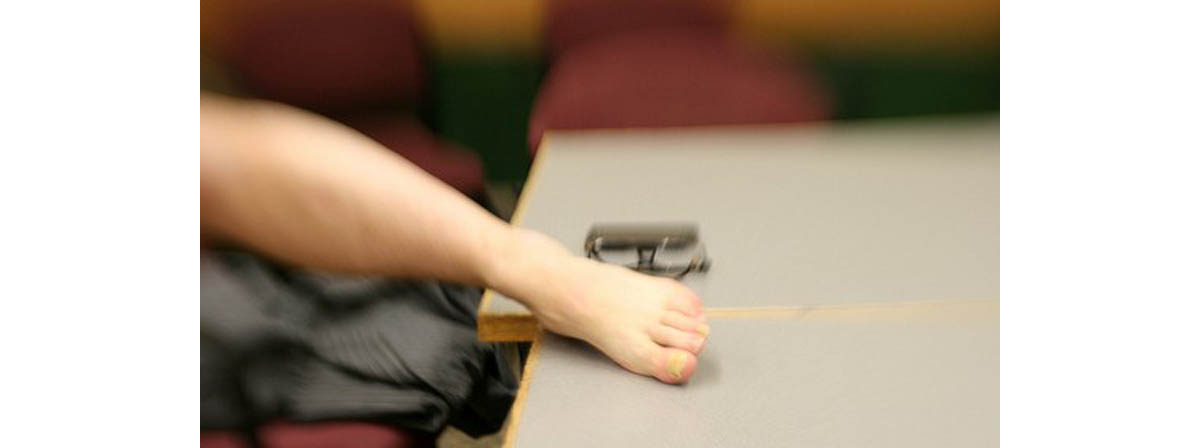Table of Contents
Dr. Maislos has told the news media that the use of a painless laser treatment technique, however, kills toenail fungus 87% of the time, without, of course, the numerous side effects of antifungal drugs. Maislos and his colleagues at Memorial Hermann Southwest Hospital use a laser that is already FDA-approved for dentistry; the off-label application of the device is not "FDA approved" but is not illegal, either.

In a clinical trial of a similar kind of laser, 50% of patients had clear toenails four months after their laser session. In the next two months, the treated toenails continued to improve, and 76% had clear nails six months after the procedure.
Laser treats fungus at the source. There is no lotion or toenail solution that has to penetrate the nail to get to the fungus or yeast in the nail bed beneath it. There is no medication that has to pass through the digestive tract, the liver, and the entire circulatory system for a small portion eventually to reach the nail. The procedure is pain-free, and typically costs about $1000 for all four sessions. The cost of laser treatment for toenail infections is not, unfortunately, currently paid by health insurance (and likely will not be paid by policies after the implmentation of the Affordable Care Act next year).
Frequently Asked Questions About Laser Treatment of Toenail Fungus
Q. Is the laser treatment for toenail fungus pain-free?
A. The nail has to be debrided, that is, filed down or shaved down, so that the maximum intensity of laser light can reach the nail bed beneath it. This is not a painful process, but some patients find it uncomfortable.
Q. Does the podiatrist treat one toe at a time?
A. All ten toes are treated in the same session. It is only necessary to make one appointment with the podiatrist for laser treatment, with a follow-up usually four to six months later.
Q. How long does the laser treatment take?
A. It usually takes 10 or 15 minutes to prep the toes for laser treatment and then 3 or 4 minutes per toes, a total of 30 to 40 minutes for the laser treatment itself. Most patients are out of the office in 45 minutes.
Q. What kind of laser is used for the treatment?
A. Most podiatrists use a YAG laser (yttrium aluminum garnet laser). This is the same kind of laser used for some dental procedures, acne treatment, and hair removal. Most podiatrists offering this kind of treatment use Normir or Noveon brand lasers.
Q. Is the treatment permanent?
A. Yes, the fungus does not come back.
Q. Is toenail fungus contagious?
A. Fungus and yeast infections of the toenails don't jump across the room from one person to another, but if you get a pedicure at a salon or spa that does not autoclave instruments, then there is a significant chance that you will get an infection.
It is also possible to get an infection by wearing an infected person's socks or shoes or by putting your bare feet on the same area of carpet where they rest their bare feet.
If you go to a nail salon, it's not a bad idea to bring your own instruments, and make sure they are sterilized before they are used on your feet. Even if you are the only person using your instruments for toenail trimming, you don't want to reinfect yourself if you have only a mild case of fungus or yeast. This is especially important if you have diabetes or if you are treated with any kind of medication that weakens the immune system, since you would be especially susceptible to infections of your nails.
- Manevitch Z, Lev D, Hochberg M, Palhan M, Lewis A, Enk CD. Direct antifungal effect of femtosecond laser on Trichophyton rubrum onychomycosis. Photochem Photobiol. 2010 Mar-Apr. 86(2):476-9. doi: 10.1111/j.1751-1097.2009.00672.x. Epub 2009 Dec 7.
- No authors listed. Treating Toenail Fungus. Consum Rep. 2010 Jul. 75(7):15.
- Photo courtesy of U.S. Navy photo by Mass Communication Specialist 3rd class Samantha A. Lewis by Wikimedia Commons : commons.wikimedia.org/wiki/File:US_Navy_110915-N-VV979-002_Attendees_of_the_Naval_Medical_Center_San_Diego_first_Scar_Symposium_wa
- Photo courtesy of Quinn Dombrowski by Flickr : www.flickr.com/photos/quinnanya/5491003776/

